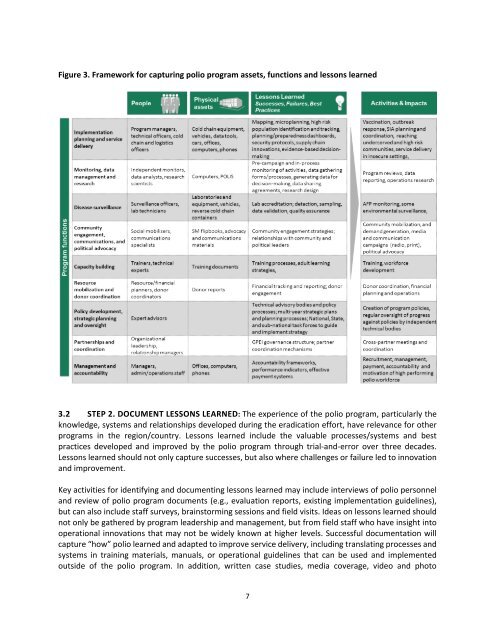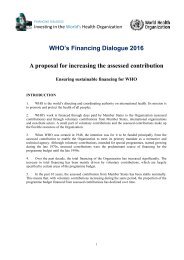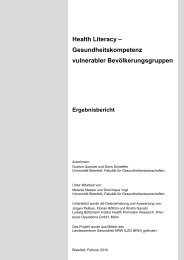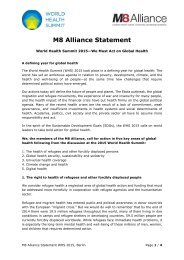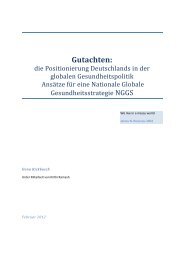POLIO PLANNING
TransitionGuidelinesForPolioLegacy
TransitionGuidelinesForPolioLegacy
Create successful ePaper yourself
Turn your PDF publications into a flip-book with our unique Google optimized e-Paper software.
Figure 3. Framework for capturing polio program assets, functions and lessons learned<br />
3.2 STEP 2. DOCUMENT LESSONS LEARNED: The experience of the polio program, particularly the<br />
knowledge, systems and relationships developed during the eradication effort, have relevance for other<br />
programs in the region/country. Lessons learned include the valuable processes/systems and best<br />
practices developed and improved by the polio program through trial-and-error over three decades.<br />
Lessons learned should not only capture successes, but also where challenges or failure led to innovation<br />
and improvement.<br />
Key activities for identifying and documenting lessons learned may include interviews of polio personnel<br />
and review of polio program documents (e.g., evaluation reports, existing implementation guidelines),<br />
but can also include staff surveys, brainstorming sessions and field visits. Ideas on lessons learned should<br />
not only be gathered by program leadership and management, but from field staff who have insight into<br />
operational innovations that may not be widely known at higher levels. Successful documentation will<br />
capture “how” polio learned and adapted to improve service delivery, including translating processes and<br />
systems in training materials, manuals, or operational guidelines that can be used and implemented<br />
outside of the polio program. In addition, written case studies, media coverage, video and photo<br />
7


